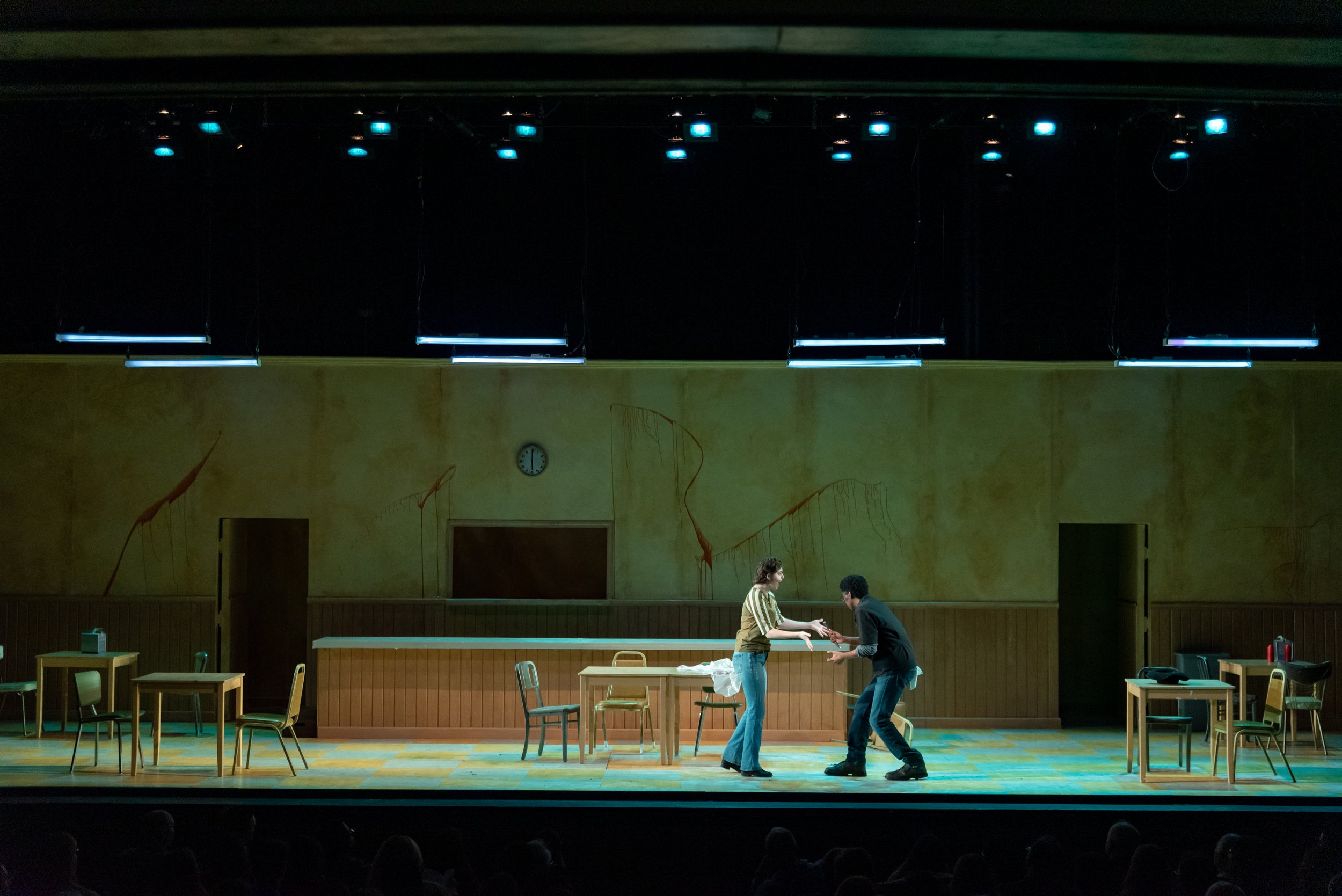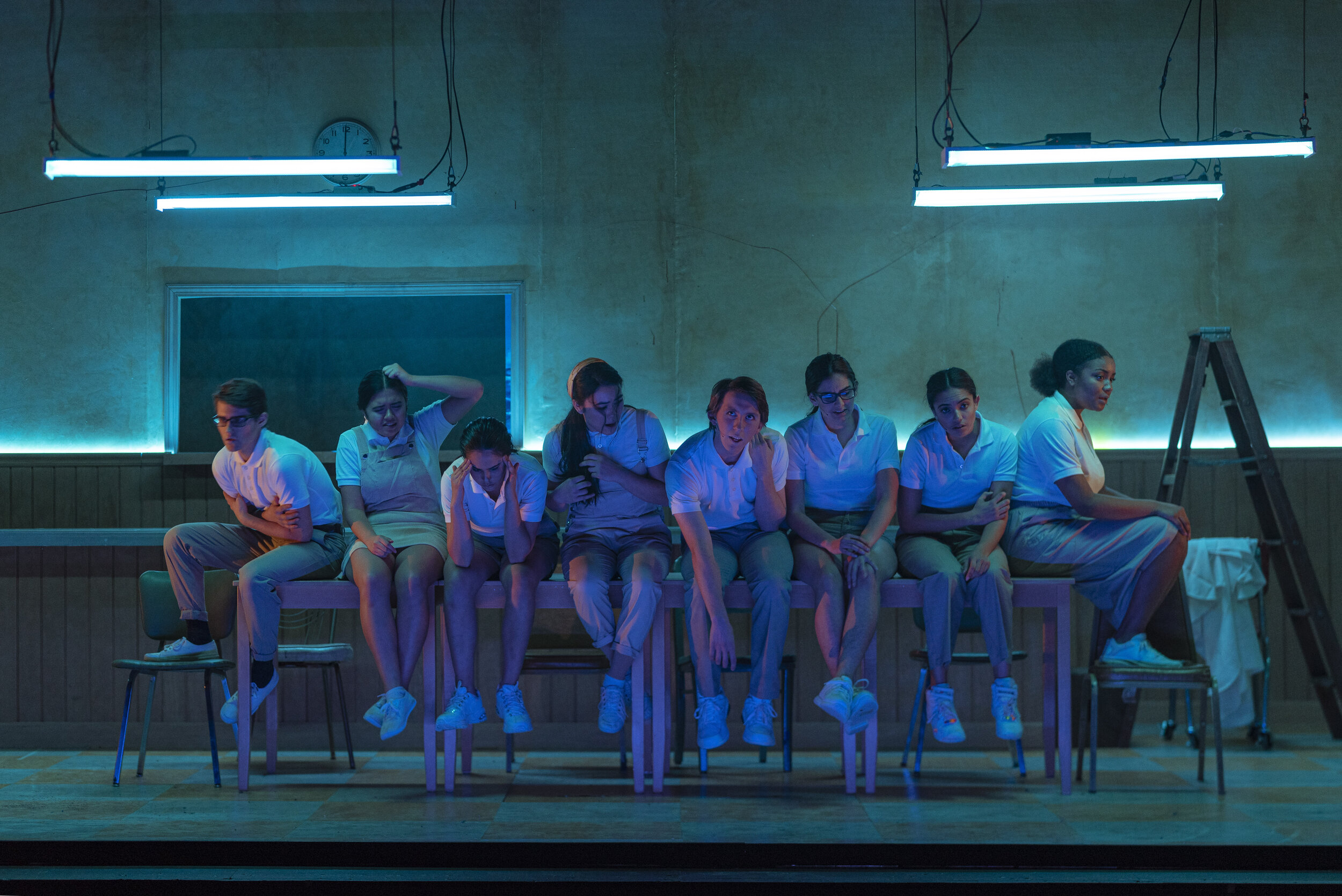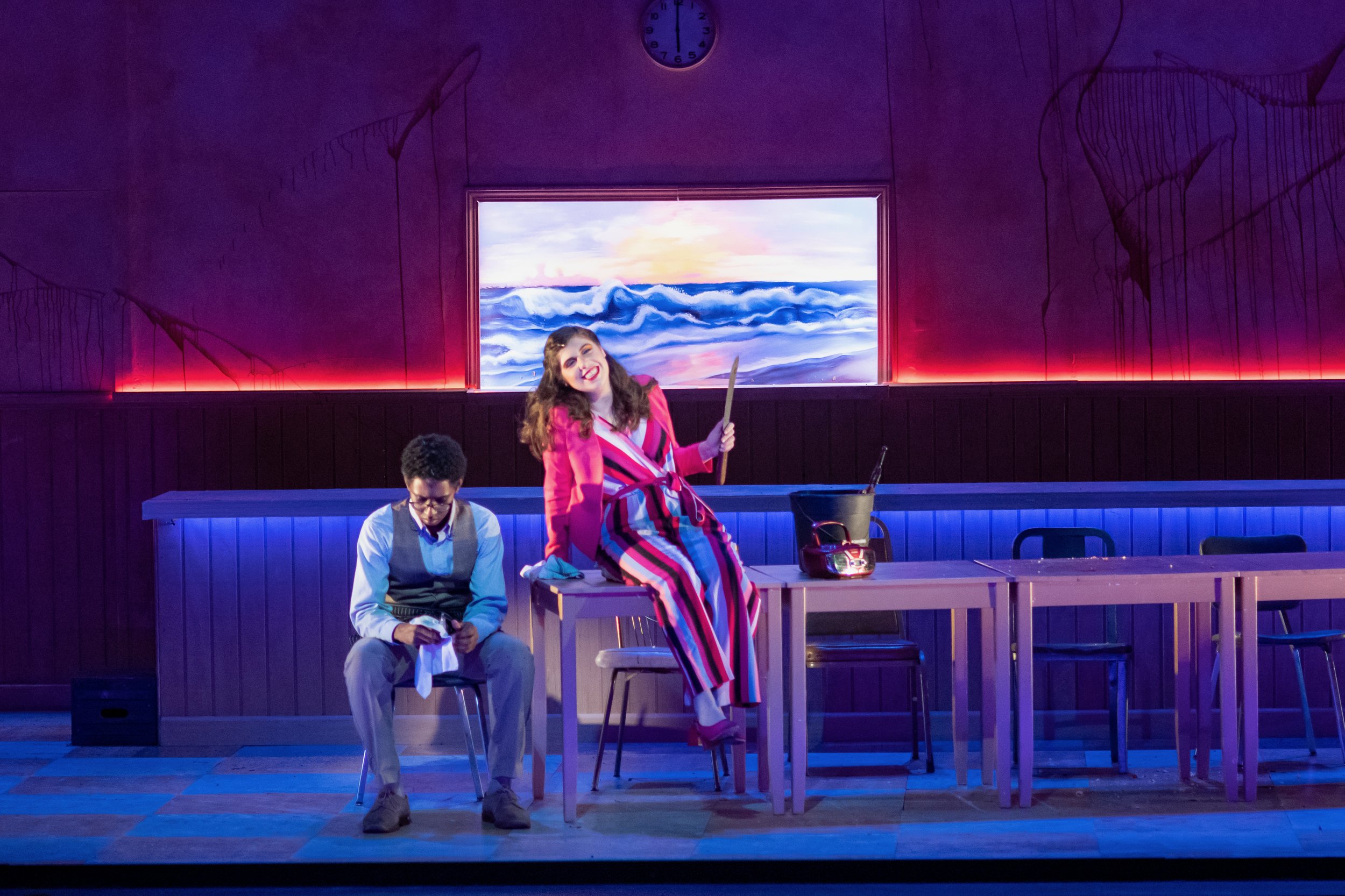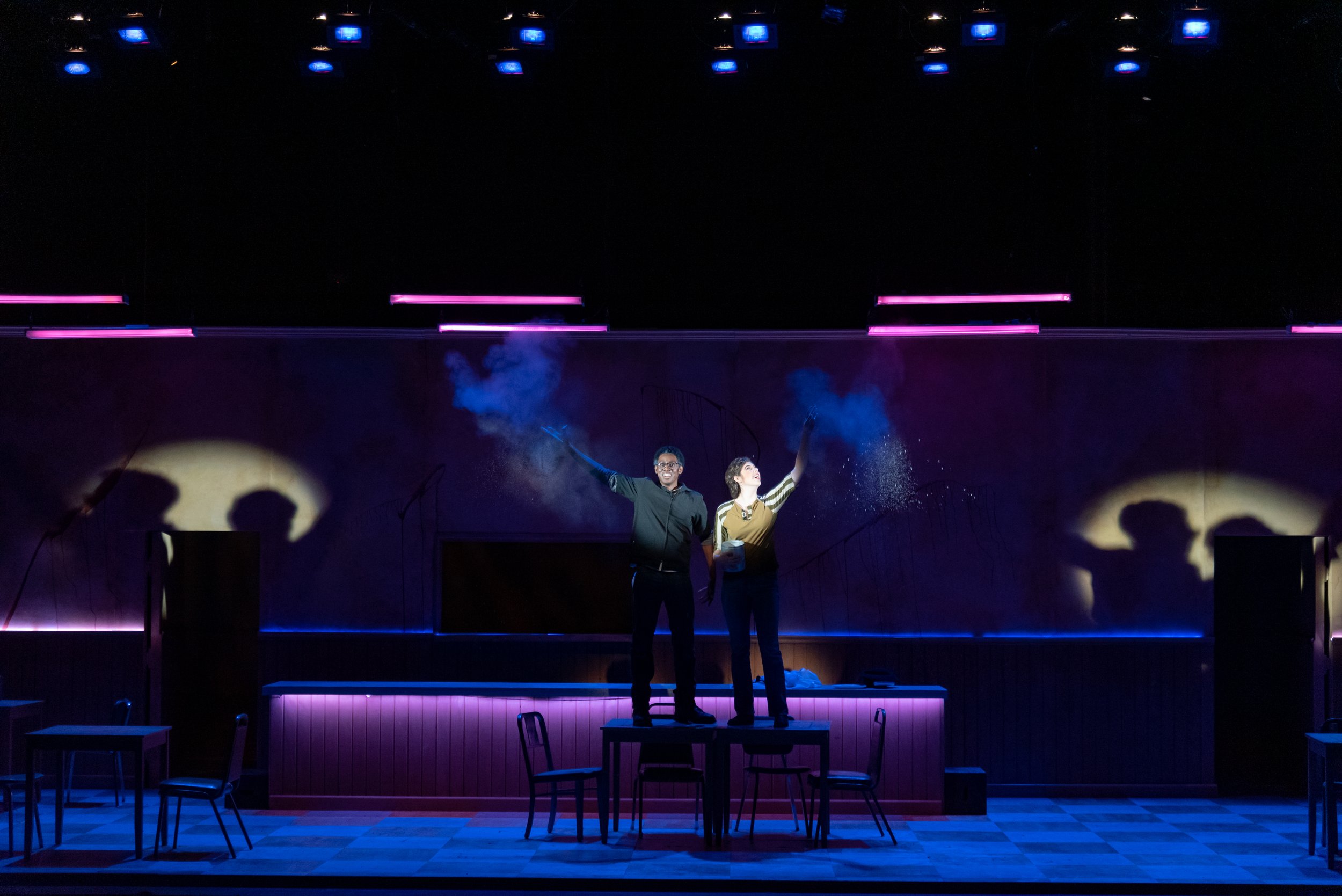SWEENEY TODD
Music & Lyrics by Stephen Sondheim
Book by Hugh Wheeler
From an Adaptation by Christopher Bond
The Yale Dramatic Association
November 20 - 23, 2019














CREATIVE TEAM
director - Noam Shapiro
producer - Mikaela Boone
music director - Harry Castle
choreographer - Madi Cupp-Enyard
stage manager - Isaac Swift
scenic designer - Stephanie Osin Cohen
lighting designer - Carolina Ortiz
costume designer - Annie Le
sound designer - Megan “Deets” Culley
technical director - Robbie Skoronski
master electrician - Tully Goldrick
sound engineer - Danielle de Haerne
head rigger - Simon Rabinowitz
properties master - Deirdre Flannagan
makeup artists - Kara O’Rourke & Allie Olson
assistant directors - Madi Cole & Kyra Gee
assistant music directors - Peter Sykes & Jake Latts
assistant producer - Ava King
assistant stage managers - Natalie Perez, Evelyn Larson, Sophia Dopico, Sam Bezilla
assistant lighting designer - Chris West
assistant costume designer - Claire Donnellan
assistant sound engineers - James Ham & Yasmina Abukhadra
assistant sound designer - Sharyn Zhu
photo credits - Sydney Holmes & Charlie Gleberman
ENSEMBLE
Sweeney Todd - Matthew Pettus
Mrs. Lovett - Rebecca Salzhauer
Anthony - John Cooper
Johanna - Malia Munley
Tobias - Annaelise Kennedy
Judge Turpin - Zach Lee
Beadle Bamford - Ian Berlin
Beggar Woman - Ale Campillo
Adolfo Pirelli - Sofia Fusco
Jonas Fogg - Santana Vannarath
Bird Seller - Sita Strother
Ensemble - Catherine Alam-Nist
Ensemble - Bradley Nowacek
Ensemble - Leslie Schneider
Ensemble - LiMei Vera
Ensemble - Simone Williams
Ensemble - Tavi Wolfwood
Tobias Understudy - Kyra Gee
SWEENEY TODD
Synopsis:
A wrongfully convicted man seeks revenge. A struggling business owner does anything to survive. A child is separated from her parents. A woman isn’t believed. A judge abuses his power. A couple is punished for falling in love. A young adult is left to pick up the pieces. Thrilling and dark, funny and terrifying, Sweeney Todd tells the story of a community devouring itself from within and the potential for violence that lies within us all.
Stripped down to reveal the complicated psychological truths at its core, this production approached Sweeney Todd as if it were a new work, free of expectations and pre-conceived assumptions. Reimagined for the twenty-first century, our production was inspired by British cafes, American diners, and fast food chains that serve as de-facto community centers across both the UK and US. The production brought together an inclusive cast and production staff to tell a story that reflects our world today, set in one of the most diverse cities in the world.
Director’s Note:
As the Dramat and I discussed our approach to Sweeney Todd, it became apparent that the criminal injustices and cycles of violence at the heart of this forty-year-old musical reverberate through our world today. Rather than place the show in a distancing Victorian social framework, we’ve chosen to set our production in what playwright Tarell Alvin McCraney has coined as “the distant present.”
Our Sweeney is informed by classic London cafes (or caffs) that popped up after World War II and still dot the city today. Often founded by immigrants, many of these caffs—much like their American counterpart, the diner—serve as de-facto community centers, the glue that holds neighborhoods together. Writing in 1985, British dramatist Bernard Kops described caffs as “places for special relationships, places to pass the time, to assuage all sorts of thirsts, hunger.”
Hunger is central to our Sweeney Todd, from Judge Turpin’s uncontrollable sexual appetite and Mrs. Lovett’s ravenous customers, to Tobias’ insatiable “aching void” and Todd’s vengeful service to a “dark and hungry god.” By colliding the classical with the contemporary, our cast and creative team have asked what happens when we give in to our darkest, basest hungers and allow acts of cruelty to spiral out of control.
To many, Sweeney Todd depicts a world in which everything bends towards destruction. But, as Sondheim scholar Aaron C. Thomas reminds us, the musical is also a fable—the ‘Ballad’ insists on this—and it’s a story that has been told countless times and with different variations across generations. Thinking about the show as the repetition of a tragic ritual opens up a space for hope: The tale can be told differently. Perhaps the next time we feel the pull of the violence that we’ve ritualized as a society we will simply say no. It’s in our power to break the cycle. But there's work to be done, so much work.
PRESS
“The Dramat’s current rendition brings the story from its original setting in mid-19th-century England to the present, with set design inspired by London diners. The show explores cycles of violence, criminal injustice and betrayals of love — themes that Shapiro said are “still with us today.” The modern setting helps make the show’s issues feel present in today’s society, he added. “At its core, the show is about how violent actions and a lust for revenge can corrupt even the best people, and how cruelty can spiral out of control,” Shapiro said.”
“Dramat Stages Sweeney Todd,” feature by Carrie Zhou for The Yale Daily News, November 21, 2019
““I have been working with Noam for about nine months,” said Mikaela Boone ’21, the show’s producer. “He is a very collaborative person. The first thing he did was create a big Google Drive with everyone to see what the other participants were thinking. He makes sure that everyone feels like it is their space, too.” Bradley Nowacek ’23 is a member of the show’s ensemble. He noted that Shapiro closely attends to detail and focuses on the importance of every element of the show, big or small. “It is very clear how much work he puts into what he does,” Nowacek said. “He is very charming and a delight to work with.””
"ARTIST PROFILE: Noam Shapiro ’15,” profile by Tamar Geller for The Yale Daily News, November 21, 2019